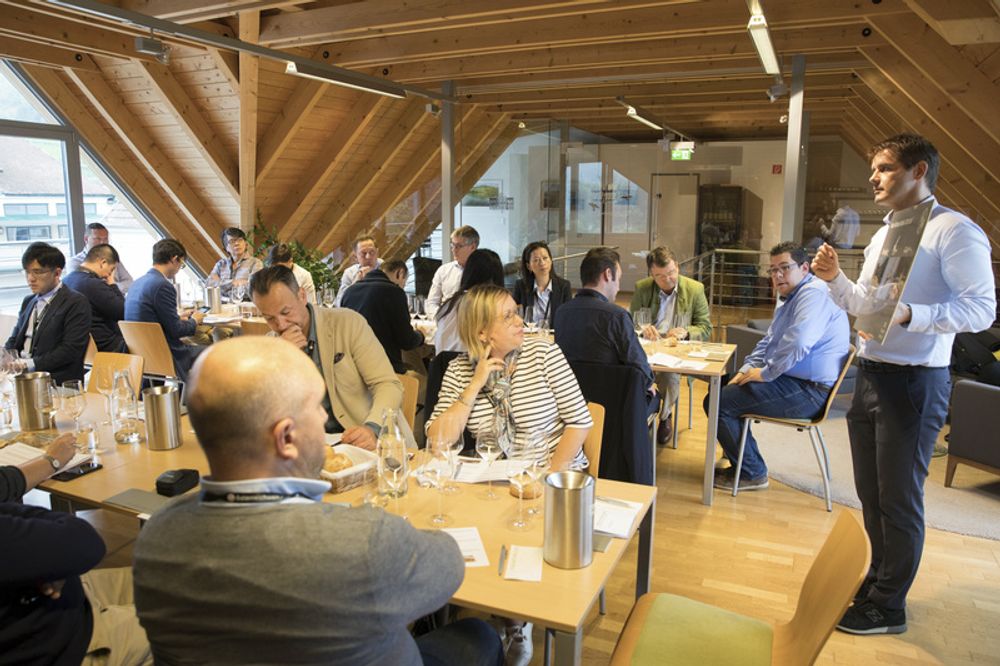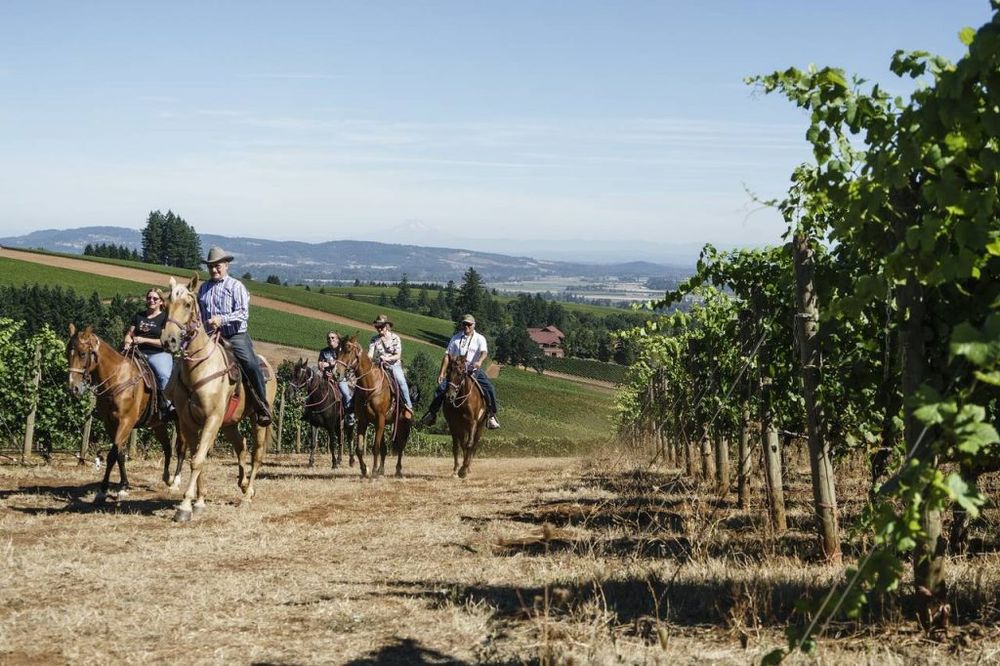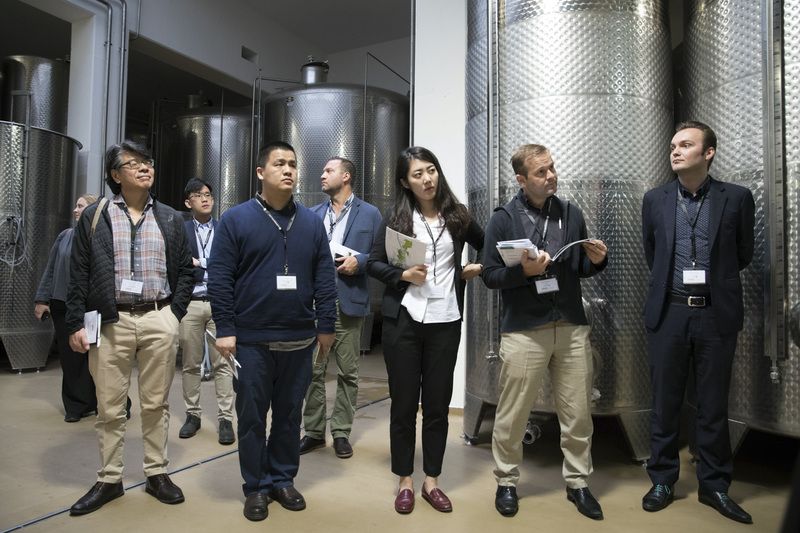Going on wine buying trip can be great fun, but for the most part they are a hard slog where you are trying to not just keep up the agenda, but see the wood from the trees from the wines you are tasting. But for Doug Wregg at Les Caves de Pyrene finding new wines it is still the most exciting part of his job.
Wine buyers fall into various categories. There are the buyers for investment purposes, wherein the wine is already a commodity with a burnished reputation. (The market has already ascribed a value to such a wine.) There are the buyers who work with oenologists and producers to create brands.
Then there is a buyer for a small company, which is importing wines from around the world from small artisan producers, which operates in a rather different universe. He or she has must understand that buying what they personally find delicious and interesting is only of many aspects of the entire process, and that they must also forge a strong and communicative relationship with the grower or domaine, and educate and enthuse their sales team in order to sell the wine.
Being a wine buyer sounds a glamorous gig on the surface; you travel a lot, you are courted by growers who want to sell you their products, you get to taste more wine than you know what to do with. And you end up eating way more than is good for you!
For all this, buying comes with responsibilities and challenges, the main one being to make the right decision on each wine that you eventually decide to import, a decision that must work both for your wine company and for the grower in question.
Unsold wine, after all, locks in cashflow. Whilst you may be charmed by a grower, fall in love with a new estate, and want to take on board a raft of new labels, you also need to assess the impact of any buying decision upon the existing wines from other estates in your portfolio. Each addition to your list may also be a dilution, resulting in potential stock logjams.
It is important to know, therefore, what will be a positive addition, and what essentially duplicates something that you already have. The wrong wine…is the future bin end.

Wine buyers from all over the world travelled to Austria last year to take part in Vinexpo’s first Explorer event
The First Trip
Buying trips are approximately 90% organisation and 10% serendipitous discovery. It certainly helps to prepare thoroughly. Find out (by tasting, by reading, by asking) what are the benchmarks that you should be measuring your potential discoveries against. It helps if you already know a sommelier, wine writer, or expert on the region or country who is on the same page as you, shares your “wine values”, and has a similar taste to yours. Equally, you need a very clear idea what you are looking for in terms of global quality and value for money.
Most buyers don’t have the luxury of spending more than a few days in a region, and thus need to plan wisely to ensure that they have time to visit their main “targets”. The exhaustive approach espoused by some wine-buyers to fit some seven or eight visits in a day is problematic, in that if you meet someone who is particularly interesting, you either have to cut short that visit and miss the opportunity to develop a relationship further, or risk the remainder of the schedule. In any case, you won’t necessarily find all the answers on your first visit to a region, and it is advisable to return to confirm initial impressions and continue your education.
Where and how to taste

You’ve seen one steel tank…you’ve seen them all: not necessarily. Every winery is different and it is your job as a buyer to find out what, says Wregg
Tasting at the winery may only give part of the picture and may not always reveal the wines at their most becoming. How often do buyers taste wine from a tank or barrel in a cold, damp cellar in the middle of winter and try to assess how it may develop by the time it is bottled? However, it is a useful exercise in terms of getting the grower’s perspective on how the wine is showing at a given moment. It is also instructive to sample older vintages to understand how a wine may develop.
When I taste the wines for the first time I allow gut feeling to be my guide. That may sound unscientific, but gut feeling is instinct, and instinct derives from a number of instantaneous subjective and objective assessments rolled into a single impression. If the wine moves you, if it feels real, then you have something to work with. After the initial reaction to the wine or wines, other criteria come into play and buyers do need to don the hard hat, and temper enthusiastic feelings with quotidian commercial considerations, asking themselves where the wine might fit in, whether wine buyers for restaurants or retailers would find it equally delicious and good value, who might be drinking the wine, and on what occasion.
There is a saying that one should buy the grower and the estate/domaine rather than the wine. You need to consider the whole package rather than one good wine. It is imperative to visit the vineyards and get a feel for how much life there is amongst the vines, to literally smell the air and run your fingers through the soil. This precursor of buying combines observation and feeling, noticing whether the vines are well-tended, the farming is sensitive and proactive, and sensing whether the whole place has special energy about it.
You may also buy on the feeling about the vigneron him-or-herself. Trust is important on both sides. A grower who is friendly and sympathetic, drinks the kinds of wines that you drink. is interested and listens to your comments, is someone who will be easy to communicate with in the future.
The Nuts and Bolts of Buying

You might get up to all sorts on a wine trip to a far, foreign land, but however much a good time you have a good wine buyer will always get back to the nuts and bolts of why they are there
Once you agree that you will work together, it is essential to chart and manage expectations and to clarify terms and conditions. A buyer may be duty-bound to ask for the best price, but there is no point driving a hard bargain and making unrealistic stipulations. Growers can shop around too and they need to have sustainable financial arrangements in place for their cashflow.
Sometimes the cost of the wine is the cost of the wine, but when calculating selling prices, it is necessary to take a longer view and analyse external price pressures. Any buyer has to factor in logistical price inflation (exchange rate, cost of transport, storage) when setting a final selling price.
Having mutually agreed exclusive distribution, prices, any sample allocation or promotional allowance, the next step is to apprise the producer of your likely ordering patterns. You may need to agree reserves (this will help you to ship manageable quantities rather take everything at once and put undue pressure on cash flow). In an ideal world, you would wish to rotate stock every three months.
Other buying dos…
Not every buying decision reaps an instant reward. New wines take time to establish; it may be months between the time that they arrive and the time they start to sell. For a wine to be successful it needs roots in many different places. It is not much use to anyone to have wonderful sales in one year and then a big slump in the next. Organic growth is best, keeping the stock moving steadily, and allows one to predict shipment times. If the wines are not selling for a particular reason, however, you should communicate this to the grower before it becomes an insurmountable problem.
The role of the buyer, as I have suggested, is considerably more than as a conduit for acquiring new inventory. The buyer has to follow through, training and motivating the sales team by relaying salient information, telling the stories, providing the context- in short, bringing the wine and the place where it comes from, to life.










































